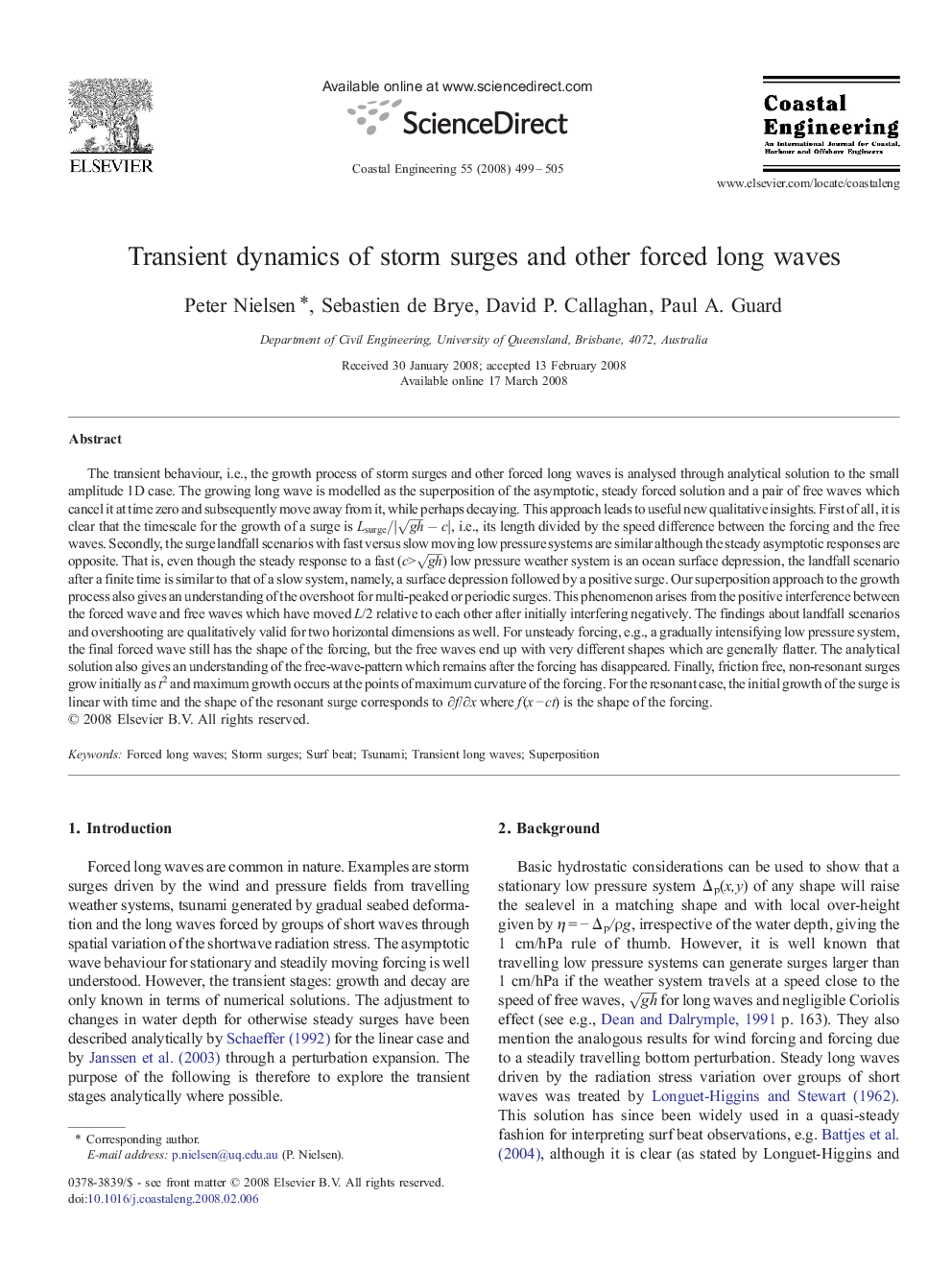| کد مقاله | کد نشریه | سال انتشار | مقاله انگلیسی | نسخه تمام متن |
|---|---|---|---|---|
| 1721265 | 1014478 | 2008 | 7 صفحه PDF | دانلود رایگان |

The transient behaviour, i.e., the growth process of storm surges and other forced long waves is analysed through analytical solution to the small amplitude 1D case. The growing long wave is modelled as the superposition of the asymptotic, steady forced solution and a pair of free waves which cancel it at time zero and subsequently move away from it, while perhaps decaying. This approach leads to useful new qualitative insights. First of all, it is clear that the timescale for the growth of a surge is Lsurge/|gh−c|, i.e., its length divided by the speed difference between the forcing and the free waves. Secondly, the surge landfall scenarios with fast versus slow moving low pressure systems are similar although the steady asymptotic responses are opposite. That is, even though the steady response to a fast (c>gh) low pressure weather system is an ocean surface depression, the landfall scenario after a finite time is similar to that of a slow system, namely, a surface depression followed by a positive surge. Our superposition approach to the growth process also gives an understanding of the overshoot for multi-peaked or periodic surges. This phenomenon arises from the positive interference between the forced wave and free waves which have moved L/2 relative to each other after initially interfering negatively. The findings about landfall scenarios and overshooting are qualitatively valid for two horizontal dimensions as well. For unsteady forcing, e.g., a gradually intensifying low pressure system, the final forced wave still has the shape of the forcing, but the free waves end up with very different shapes which are generally flatter. The analytical solution also gives an understanding of the free-wave-pattern which remains after the forcing has disappeared. Finally, friction free, non-resonant surges grow initially as t2 and maximum growth occurs at the points of maximum curvature of the forcing. For the resonant case, the initial growth of the surge is linear with time and the shape of the resonant surge corresponds to ∂f/∂x where f(x − ct) is the shape of the forcing.
Journal: Coastal Engineering - Volume 55, Issue 6, June 2008, Pages 499–505